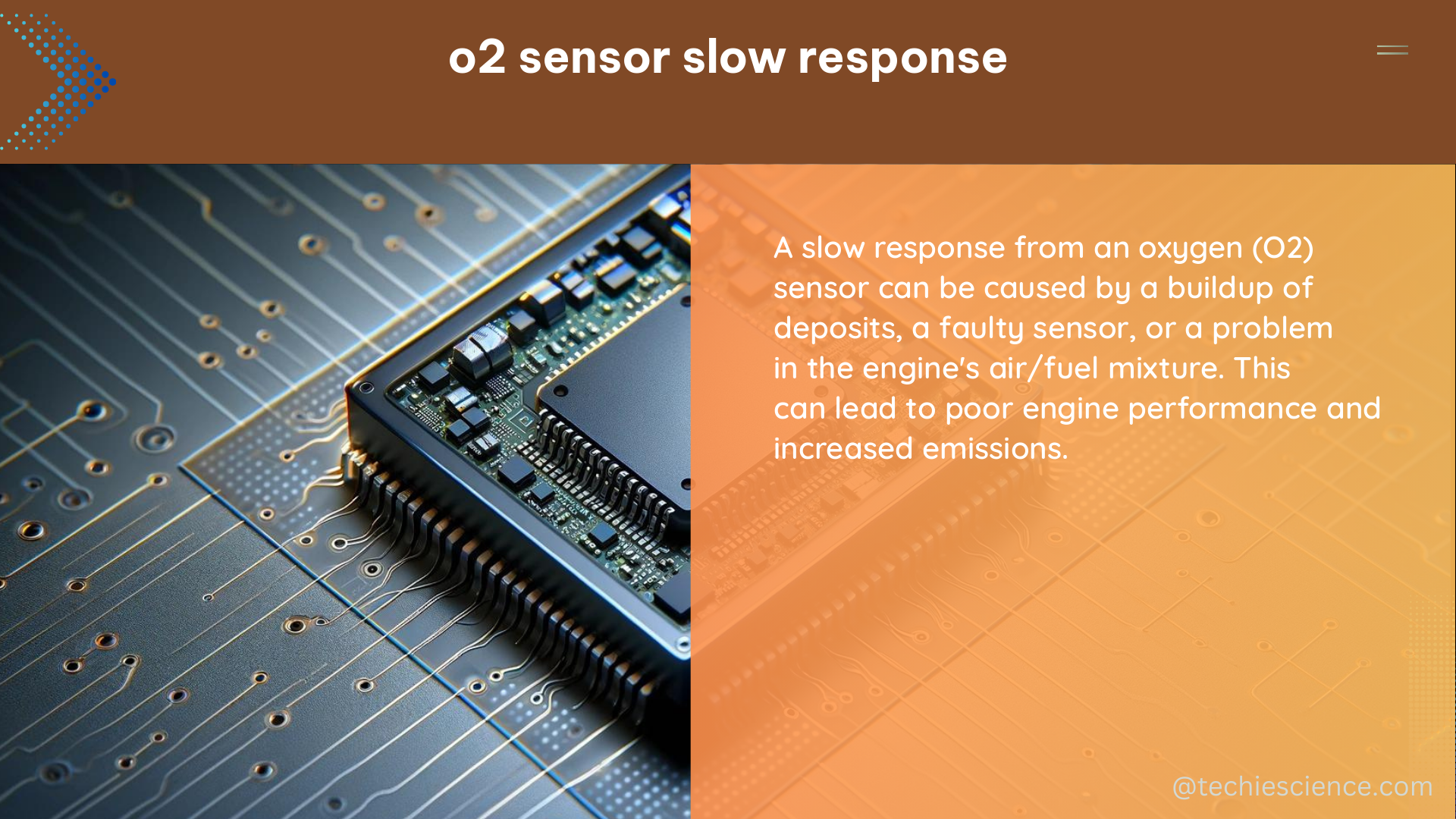Oxygen (O2) sensors are critical components in various applications, from aircraft oxygen systems to industrial gas monitoring. However, one common issue that can arise is slow sensor response, which can significantly impact the accuracy and reliability of measurements. In this comprehensive guide, we will delve into the measurable and quantifiable data on O2 sensor slow response, explore the technical specifications that contribute to this phenomenon, and provide a detailed DIY approach to address this challenge.
Measurable and Quantifiable Data on O2 Sensor Slow Response
Response Time
The response time of an O2 sensor is a crucial metric that determines its performance. It is the time taken by the sensor to reach 90% of its final value when exposed to a step change in oxygen concentration. For instance, the TBR4100/1025 O2 sensor from World Precision Instruments has a response time of less than 10 seconds, while the Teledyne Analytical Instruments’ Model 3000TA has a response time of less than 12 seconds.
Detection Limit and Range
The detection limit and range of an O2 sensor specify the minimum and maximum oxygen concentrations it can measure accurately. The TBR4100/1025 O2 sensor has a detection limit of 0.1% and a range of 0.1%-100% oxygen concentration, while the Teledyne Analytical Instruments’ Model 3000TA has a detection limit of 0.1 ppm and a range of 0-25% oxygen concentration.
Sensitivity
Sensitivity is the change in sensor output per unit change in oxygen concentration. A higher sensitivity indicates a better ability to detect changes in oxygen concentration. The TBR4100/1025 O2 sensor has a sensitivity of 0.014 V/% O2, while the Teledyne Analytical Instruments’ Model 3000TA has a sensitivity of 0.1 V/% O2.
Drift
Drift is the change in sensor output over time, even when the oxygen concentration remains constant. A lower drift value indicates better long-term stability. The TBR4100/1025 O2 sensor has a drift of less than 2% per month, while the Teledyne Analytical Instruments’ Model 3000TA has a drift of less than 1% per month.
Temperature Dependence
The output of an O2 sensor can be influenced by temperature. Some sensors are more temperature-dependent than others, requiring temperature compensation or control for accurate measurements. The TBR4100/1025 O2 sensor has a temperature coefficient of 0.2% per °C, while the Teledyne Analytical Instruments’ Model 3000TA has a temperature coefficient of 0.1% per °C.
Technical Specifications of O2 Sensor Slow Response

Sensor Design
The design of an O2 sensor, including its electrode material, electrolyte, and diffusion barrier, can significantly affect its response time. Thinner diffusion barriers and optimized electrode materials can minimize response time. For example, the TBR4100/1025 O2 sensor uses a lead-based electrochemical cell with a thin diffusion barrier, while the Teledyne Analytical Instruments’ Model 3000TA uses a zirconium oxide-based sensor with a proprietary diffusion barrier design.
Signal Processing
The use of advanced signal processing techniques, such as digital filtering and data analysis algorithms, can help mitigate the effects of slow sensor response. These techniques can be implemented in the sensor’s electronics or in the data acquisition and analysis software. For instance, the TBR4100/1025 O2 sensor incorporates a digital signal processing (DSP) chip to perform real-time filtering and data analysis, while the Teledyne Analytical Instruments’ Model 3000TA has a built-in microprocessor that can apply various signal processing algorithms.
Calibration and Maintenance
Regular calibration and maintenance of O2 sensors can help ensure accurate and reliable measurements. This includes checking for contamination, damage, or wear that could affect sensor performance. Manufacturers often provide specific guidelines for calibration and maintenance, such as the recommended calibration interval and the procedures for cleaning or replacing the sensor.
DIY Approach for Addressing O2 Sensor Slow Response
Regular Inspections
Regularly inspect the O2 sensor for any signs of damage, contamination, or wear, and replace or clean it as necessary. This can help maintain the sensor’s performance and minimize the effects of slow response.
Temperature Control
If the O2 sensor is temperature-dependent, ensure proper temperature control during measurements to minimize the effects of temperature on sensor response. This may involve using a temperature-controlled enclosure or implementing temperature compensation algorithms in the data acquisition system.
Signal Processing
Implement advanced signal processing techniques, such as digital filtering or data analysis algorithms, to help mitigate the effects of slow sensor response. This can be done using specialized software or by integrating custom signal processing routines into the data acquisition system.
Calibration and Maintenance
Regularly calibrate and maintain the O2 sensor according to the manufacturer’s recommendations to ensure accurate and reliable measurements. This may include performing periodic calibrations, cleaning the sensor, and replacing any worn or damaged components.
By understanding the measurable and quantifiable data on O2 sensor slow response, the technical specifications that contribute to this issue, and the DIY approaches to address it, you can effectively troubleshoot and optimize the performance of your O2 sensing system.
References
- AIHA. (n.d.). The Future of Sensors – DigitalOcean. Retrieved from https://aiha-assets.sfo2.digitaloceanspaces.com/AIHA/resources/Get-Involved/AIHA_Future-of-Sensors_web_updated.pdf
- United States Air Force Scientific Advisory Board. (2012). Aircraft Oxygen Systems. Retrieved from https://www.airandspaceforces.com/PDF/DocumentFile/Documents/2012/AFSAB_Oxygen_020112.pdf
- World Precision Instruments. (n.d.). TBR4100/1025. Retrieved from https://www.wpiinc.com/media/wysiwyg/pdf/TBR_IM.pdf
- Teledyne Analytical Instruments. (n.d.). Model 3000TA Oxygen Analyzer. Retrieved from https://www.teledyne-ai.com/products/model-3000ta-oxygen-analyzer

The lambdageeks.com Core SME Team is a group of experienced subject matter experts from diverse scientific and technical fields including Physics, Chemistry, Technology,Electronics & Electrical Engineering, Automotive, Mechanical Engineering. Our team collaborates to create high-quality, well-researched articles on a wide range of science and technology topics for the lambdageeks.com website.
All Our Senior SME are having more than 7 Years of experience in the respective fields . They are either Working Industry Professionals or assocaited With different Universities. Refer Our Authors Page to get to know About our Core SMEs.